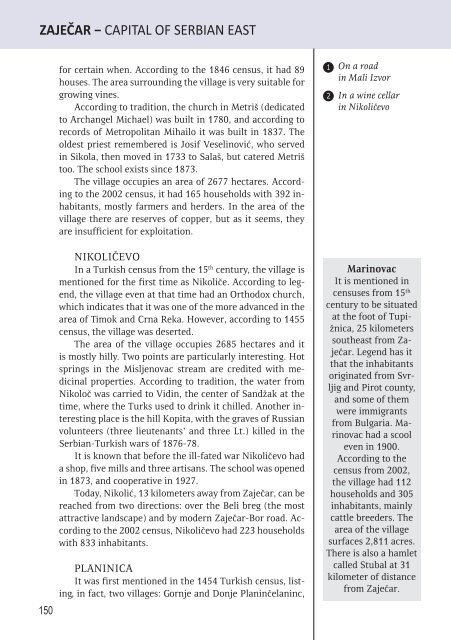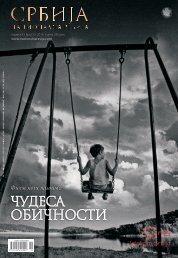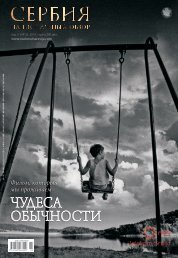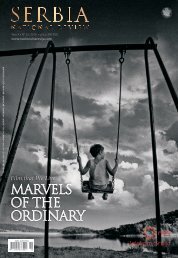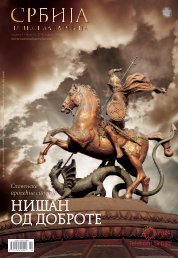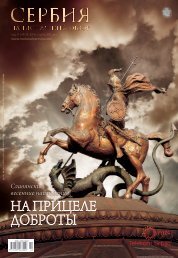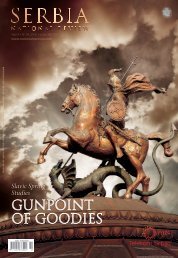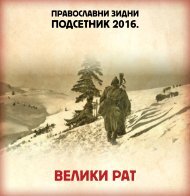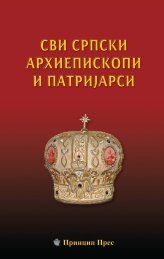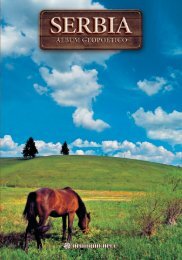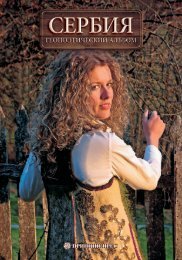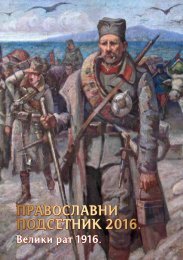Zajecar - engleski - niska rezolucija
You also want an ePaper? Increase the reach of your titles
YUMPU automatically turns print PDFs into web optimized ePapers that Google loves.
ZAJEČAR − CAPITAL OF SERBIAN EAST<br />
for certain when. According to the 1846 census, it had 89<br />
houses. The area surrounding the village is very suitable for<br />
growing vines.<br />
According to tradition, the church in Metriš (dedicated<br />
to Archangel Michael) was built in 1780, and according to<br />
records of Metropolitan Mihailo it was built in 1837. The<br />
oldest priest remembered is Josif Veselinović, who served<br />
in Sikola, then moved in 1733 to Salaš, but catered Metriš<br />
too. The school exists since 1873.<br />
The village occupies an area of 2677 hectares. According<br />
to the 2002 census, it had 165 households with 392 inhabitants,<br />
mostly farmers and herders. In the area of the<br />
village there are reserves of copper, but as it seems, they<br />
are insufficient for exploitation.<br />
1<br />
2<br />
On a road<br />
in Mali Izvor<br />
In a wine cellar<br />
in Ni ko li čev o<br />
NIKOLIČEVO<br />
In a Turkish census from the 15 th century, the village is<br />
mentioned for the first time as Nikoliče. According to legend,<br />
the village even at that time had an Orthodox church,<br />
which indicates that it was one of the more advanced in the<br />
area of Timok and Crna Reka. However, according to 1455<br />
census, the village was deserted.<br />
The area of the village occupies 2685 hectares and it<br />
is mostly hilly. Two points are particularly interesting. Hot<br />
springs in the Misljenovac stream are credited with medicinal<br />
properties. According to tradition, the water from<br />
Nikoloč was carried to Vidin, the center of Sandžak at the<br />
time, where the Turks used to drink it chilled. Another interesting<br />
place is the hill Kopita, with the graves of Russian<br />
volunteers (three lieutenants’ and three Lt.) killed in the<br />
Serbian-Turkish wars of 1876-78.<br />
It is known that before the ill-fated war Nikoličevo had<br />
a shop, five mills and three artisans. The school was opened<br />
in 1873, and cooperative in 1927.<br />
Today, Nikolić, 13 kilometers away from Zaječar, can be<br />
reached from two directions: over the Beli breg (the most<br />
attractive landscape) and by modern Zaječar-Bor road. According<br />
to the 2002 census, Nikoličevo had 223 households<br />
with 833 inhabitants.<br />
PLANINICA<br />
It was first mentioned in the 1454 Turkish census, listing,<br />
in fact, two villages: Gornje and Donje Planinčelaninc,<br />
150<br />
Ma ri no vac<br />
It is mentioned in<br />
censuses from 15 th<br />
century to be situated<br />
at the foot of Tu pižni<br />
ca, 25 kilometers<br />
southeast from Zaje<br />
ča r. Legend has it<br />
that the inhabitants<br />
originated from Svrljig<br />
and Pirot county,<br />
and some of them<br />
were immigrants<br />
from Bulgaria. Marinovac<br />
had a scool<br />
even in 1900.<br />
According to the<br />
census from 2002,<br />
the village had 112<br />
households and 305<br />
inhabitants, mainly<br />
cattle breeders. The<br />
area of the village<br />
surfaces 2,811 acres.<br />
There is also a hamlet<br />
called Stu bal at 31<br />
kilometer of distance<br />
from Za je ča r.


